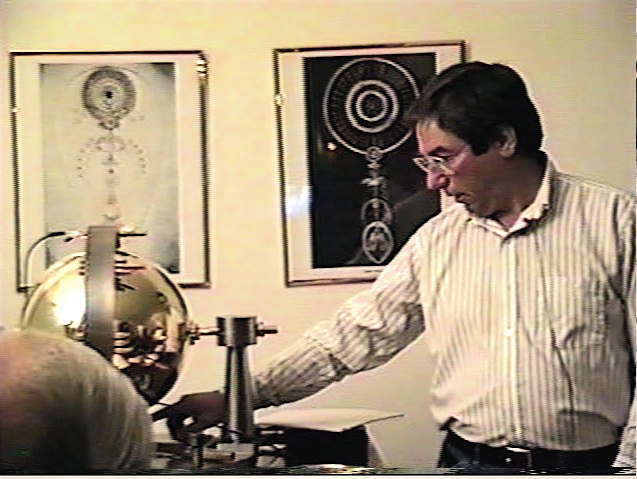 |
| In court? Need assistance? Jurisdictionary |
 |
| Your Own Credit Repair Business |
|
Topic: Keely Information Section: Harmonies of Tones part 4 Table of Contents to this Topic |
|
Referring to Diagram I., the 18 tones of keyed instruments are here again represented, both round the circle and in musical clef. In this diagram the 12 Minor Key-notes are written thus (?); the 7 white notes of a keyed instrument are here coloured; the five intermediate tones, as before, are left uncoloured. The 12 Minor Key-notes, as gained from the 12 Major Key-notes, are written in musical clef. This diagram represents the Minor Key-note A and its 6 notes veering round in trinities. A and the other 11 developing their trinities in musical dlef. Below each is the order in which the pairs unite, avoiding consecutive fifths. Kastly, Db is shewn to be an inperfection minor harmony, and by employing B as Cb, Eb is seen to be the same harmony as D#. As before, it should be remembered that the sharp and flat notes should, strictly, have intermediate tints. This diagram shews the two last minor primaries of a series of 12, with the 12 of a higher series, and the two first of a series higher still. As in the diagram of the Major, the secondaries are written below the primaries, and the sharps or flats of each harmony are written to their respective notes. With the exception that one of the primaries rises a tone higher, it will be observed that in the same way the notes of each minor primary are identical with the secondaries of each third narmony below, but in a different order; and the double tones are altered sharp or flat, as before. The first circle are 7 Minor Key- notes, their roots having been the last 7 Key notes that have developed. The second circle is a continuation of the first, shewing the 7 previously developed Key notes are the roots of the 7 higher Key-notes. Below, the D# and Eb are repeated, to shew the use of the two poles. The seven of each harmony, with its scale. Sharps of flats, which vary in the scales from the harmonies, are written to each note, and only govern that one note. The scales are written as they pair. The roots of the Minor Chords. The difference between a Major and a Minor Chord. The chords of the 12 keys follow. The sharps of flats that vary fromthe seven of the harmony, in the scales written to each note. The last descending chord is here seen to be the same as the first ascending, but this repetitive chord is only written to A. The 12 Key-notes with their trinities and scales repeated, with the addition of the chords 13th octaves. The Minor gamut modulating in the meeting of fifths through 7 octaves. The sharps and flats are written to each note of the scales that vary from the Key of the 7; the Key of each ascending and descending, are also in musical clef at the end of each line. This diagram shews the modulating gamut of the 12 Minor Keys meeting by fifths; each of the 7 circle representing musical clefs of the 18 tones, as before; the eighth circle being the octave of the first. Ascending, being with A in the innermost circle, D being its root. The Key-note A becomes the root of E, E becomes the root of B, and so on. Descending, take the Key-note A in the outermost circle. D, the root of A, becomes the fifth lower Key-note, and G its root, and then G becomes the Key--note, and C its root. The same remarks concerning the written of the meeting fifths, which are made below the corresponding diagram of the major gamut, apply to this one. The 12 Major Keys as they rise mingled, with the 13th octaves. The same no longer mingled, meeting by fifths through 7 octaves. The 7 of the 12 Minor Keys as they rise mingled, and the 13th octaves. The Key of each 7 meeting by fifths, unmingled. The Key of the ascending scale written above, and of the descending scales below. |
| See Also: |
 |
